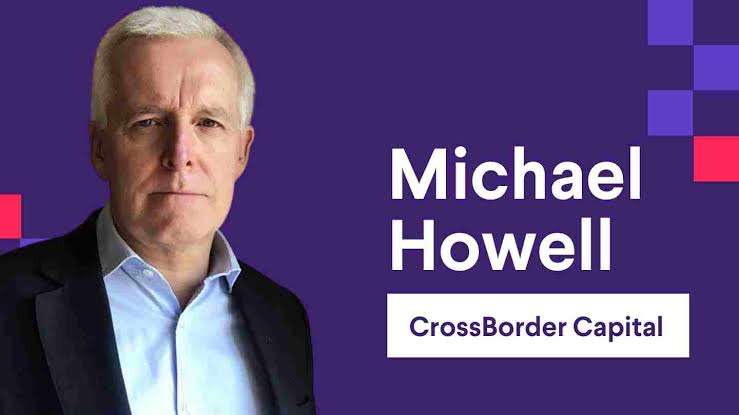Michael Howell sees cryptocurrencies as a safeguard against monetary inflation, gaining popularity among younger investors.
Michael Howell is the founder and chief executive officer of Crossborder Capital, an FCA-registered, independent investment and research firm headquartered in London that manages more than $1 billion in assets.
Before that, he held the positions of Research Director at Solomon Brothers and Head of Research for Baring Securities.
Howell, who has amassed an extensive knowledge of economics and international finance, has emerged as a prominent authority on analyzing global liquidity trends and their effects on markets.
Recent remarks on the macroeconomic environment included his appearance on Forward Guidance, where he elaborated on the ongoing ascent of worldwide liquidity and its favorable consequences for assets susceptible to volatility in terms of liquidity, including equities, gold, and cryptocurrencies.
The episode, in its entirety, merits thorough listening.
Insights from Michael Howell
Howell’s analysis centers on the observation that the Federal Reserve has been subtly injecting liquidity into markets, contrary to conventional belief. This covert strategy presents a clear juxtaposition to the prevalent discourse surrounding monetary tightening in the media.
Howell noted that despite a reduction in the Federal Reserve’s balance sheet last year, the institution’s liquidity increased by 12 to 15%.
This phenomenon is not a transient fad but rather an integral component of a more enduring trend of monetary inflation, as central banks worldwide employ shadow quantitative easing and shadow yield curve control, as described by Michael Howell.
The author noted that the depletion of the Bank Term Funding Program (BTFP) and the Reverse Repo (RRP) facility substantially contributed to the increase in Federal Reserve liquidity during the previous year.
He hypothesizes that central bank liquidity will continue to become available, particularly after the RRP has been completely depleted, and even proposes that the BTFP be renewed.
The situation is further complicated by the strategic decision made by the U.S. Treasury to reduce the maturity of its issued debt. Howell elucidated that this action effectively diminished the liquidity requirements of the private sector to assimilate government paper, thereby assisting the banking sector in managing a systemic overexposure to duration.
This may all indicate that transitioning from a rebound to a tranquil phase is imminent. Howell observed that during periods of relative tranquility, the financial sector and high-beta securities like cryptocurrencies tend to perform at their best.
Concerning cryptocurrencies, Michael Howell suggested that there might be specific beneficial effects.
His assertion that cryptocurrency could potentially serve as a preferable safeguard against monetary inflation for the younger generation is consistent with the growing inclination of younger investors toward digital assets. If true, cryptocurrency could surpass gold in popularity among younger investors.












